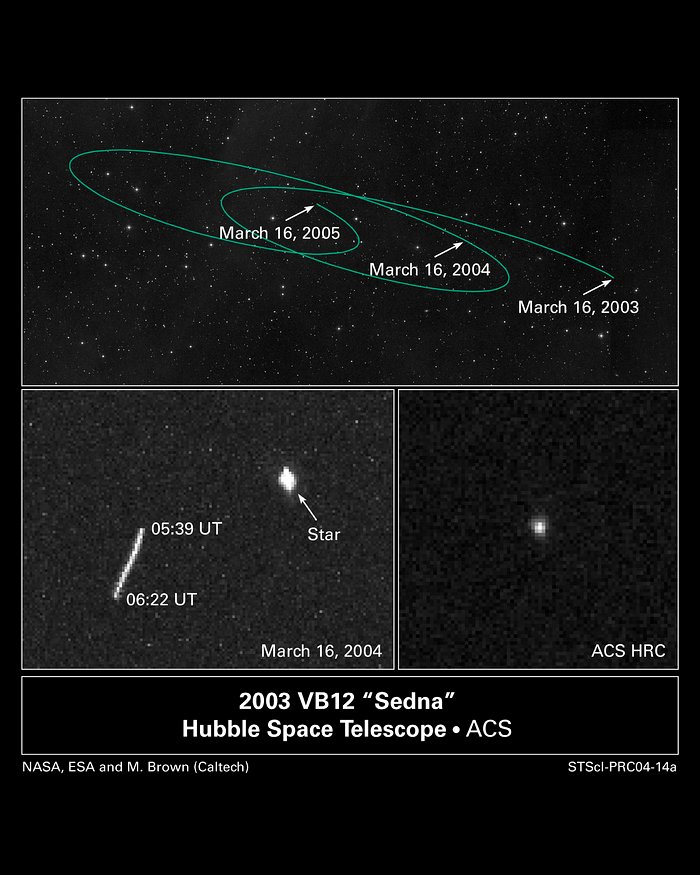Sedna mystery deepens as Hubble offers best look at farthest planetoid
This is the clearest ever view of the farthest object yet discovered in the solar system. The object is unofficially named "Sedna" (after an Inuit goddess of the sea).
[Lower right]
At a distance of over 8 billion miles (almost 13 billion kilometres), Sedna is so far away it is reduced to one picture element (pixel) in this image taken in high-resolution mode with Hubble's Advanced Camera for Surveys. This image sets an upper limit on Sedna's size of 1,000 miles in diameter. Hubble may just barely be resolving the object. It is surprising that Hubble does not see a suspected moon near the planetoid. Either the moon's not there, or, far less likely, it is being eclipsed by Sedna, or it is transiting Sedna. The gravitational tug of a moon would best explain Sedna's extremely slow rotation of 40 days as inferred from ground-based photometric observations.
[Lower left]
Hubble took a total of 35 images of Sedna on March 16, 2004. The planetoid appeared to move slightly between exposures, due to the motion of Hubble around Earth and the motion of the Earth around the Sun. Sedna, too, is moving through space, but too slowly for that to be seen in these images. The fact that the object shows this parallax shift between exposures demonstrates that Sedna is a member of the solar system, and hence is far closer to the Earth than the background star (at right) in the same field of view.
[Top]
A plot of Sedna's apparent motion through space from 2003 to 2005 easily demonstrates that it is close enough to be part of the solar system. The looping path isn't real, but is caused by the fact that Earth is orbiting the Sun and so "laps" Sedna, like a faster race car, once every year. This gives the illusion that Sedna is briefly moving backward along its orbit. Called retrograde motion, this projection effect was noted by the ancient Greeks as they plotted the periodic backward motion of nearby Mars.
Credit:About the Image
About the Object
| Name: | Sedna |
| Type: | Solar System : Interplanetary Body : Dwarf planet |
| Category: | Solar System |
Colours & filters
| Band | Wavelength | Telescope |
|---|---|---|
| Optical B | 435 nm |
Hubble Space Telescope
ACS |
